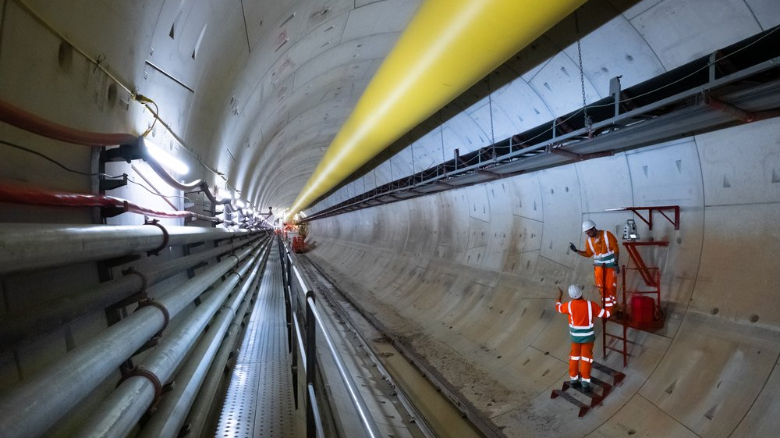The UK's experiment with water sector privatization is approaching its acid test as the country's largest utility struggles to service its debt liabilities. On March 28, Thames Water announced its failure to secure $630 million of new equity from shareholders expected by the end of this month.
As public anger grows over increasing sewage discharges into rivers and seas, pressure is mounting to restructure the sector, potentially starting by breaking up TW and simplifying its operations.
In its present form "Thames Water is environmentally unsustainable and it is probably uninvestable," claimed Dieter Helm, professor of economic policy at the University of Oxford in a recent analysis.
Thames Water (TW) is one of the UK's most indebted water companies owing roughly the equivalent of 78% of its regulated capital value. A few months ago, Fitch Rating downgraded the company's rating, reflecting its difficulty in servicing a $240 million loan due next month.
TW, which provides water and wastewater services to some 15 million people in southeast England, is negotiating with the government and regulators over how to proceed. It has reportedly been looking for big increases in what it can charge on water bills, limits on fines for its sewage pollution breaches and continuing dividend payments to shareholders.
"Conversations with [the regulator] regarding our business plans for 2025 to 2030 continue ... we had hoped to be in a position to confirm equity today. We are not there yet," according to Chris Weston, TW's CEO. "We have about $3 billion of liquidity at the moment ... enough to last us until about May 2025," he adds.
As the utility buckles under debt, Helm proposes breaking it up into simply structured service companies and floating them on the stock exchange. A separate, regulated company would take care of large wastewater capital projects. TW's Tideway super-sewer could be a precursor to this approach (see below).
TW was the largest to 10 regional water and waste companies serving England and Wales that were floated, debt-free, on the London stock exchange in 1989. It was bought by the RWE AG 12 years later as a springboard for the German multi-utility's international expansion. Since privatization, TW has acquired operations in the Americas, East Asia, Australia and Turkey.
International operations were sold off after TW's 2006 acquisition by the Kemble Water consortium led by Australia's Macquarie Bank and including various institutional investors. Between then and the time Macquarie sold its interest in Kemble in 2017, TW's debt had nearly doubled to $14 billion.
According to Dieter Helm, water and wastewater utilities should not be highly geared, elaborately constructed financial corporations justifying the high salaries and bonuses of their executives. CEO, Chris Weston has a base salary of over $1 million inflated to potentially $2.9 million with bonuses and perks.
Helm also criticizes the traditional method of improving utility performance by conduct regulation. It "staves off making hard decisions" and deters investors, he has said. Dealing with regulation demands, "armies of consultants" while the sector's five-yearly economic tariff reviews "are now major business undertakings. Almost all of this activity is a deadweight welfare loss."
TW is ultimately owned by Kemble Water Holdings via several financing subsidiaries. Public sector pension funds control around 54% with Ontario Municipal Employees Retirement owning more than 30%. The sovereign wealth funds of China and Abu Dhabi together own nearly 20%.
Kemble could restructure itself, or the government could impose a special administrator to do the job. "Under these new proposals, the taxpayer would not be liable for any debts, and the special administrator could restructure this failing firm into a company for the public benefit," Sarah Olney, spokesperson of the Liberal Democrats told parliament recently. The alternative would be to allow Thames Water "slowly sink into financial ruin."
Super Sewer
 The Tideway tunnel is expected to begin full operations next year. Photo courtesy of Tideway
The Tideway tunnel is expected to begin full operations next year. Photo courtesy of TidewayToo big for Thames Water's balance sheet, London's $5.7 billion Tideway super sewer is being developed, owned and operated by Bazalgette Tunnel Ltd. to capture combined sewer overflows along the River Thames and transfer them more than 15 miles for treatment in east London.
TW procured Bazalgette to own the project in summer 2015 and transferred to it the main design-build contractors it had selected earlier that year. Backed by government guarantees, Bazalgette injected equity and debt to finance the work, to be funded by TW's customers. Bazalgette is owned by a consortium of large financial institutions.
The first of five tunnel boring machines, of up to 23.6 ft in dia, set off in late 2018 to drive the sewer, dropping down to 213 ft below ground. The sewer will take wastewater from Acton in west London to Abbey Mills, in the east, where a 4.3-mile tunnel built separately will reach the large Beckton treatment plant.
When in full operation, expected next year, the tunnel will divert discharges from 34 combined sewer overflows eliminating over 90% of the 43 million tons of raw sewage entering the river in some years.



Post a comment to this article
Report Abusive Comment